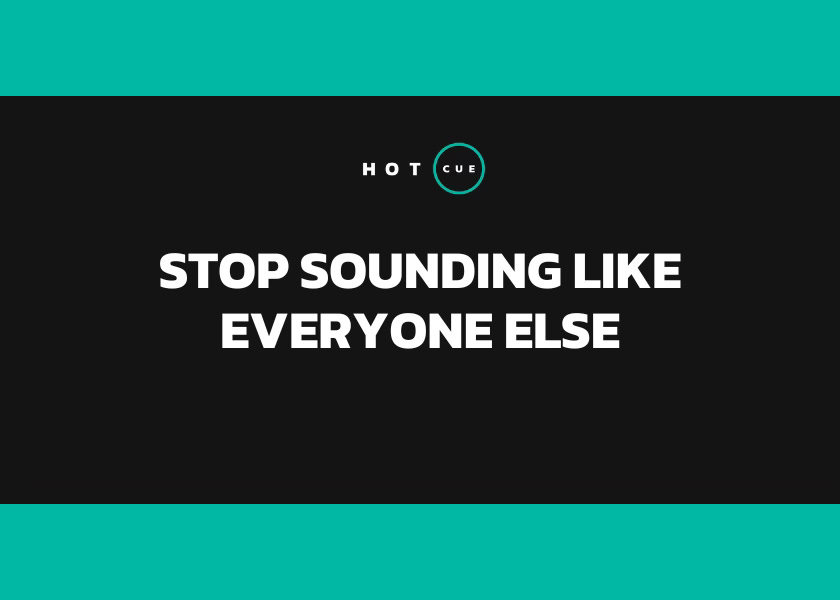Hi there Sync Sycophants,
“It all sounds the same”.
This is often the phrase non-dance music fans trot out as a way of cutting you down to your very core. Until it becomes popular on Tik-Tok anyway.
You can certainly argue some tracks don’t have a lot of variety. But there’s another aspect to this samey samey problem - you. The DJ. And more specifically, your library.
If I let the YouTube algo go wild on DJ sets I’d struggle to know who I was listening to most of the time. Fortunately there are MCs reminding me every 12 seconds.
But there are two DJs I guarantee I could pick out from the crowd, without doing anything other than listening.
If you are a D&B fan you are probably pretty familiar with A.M.C. and Lens. They both have very unique styles and sounds.
In this email I want to drill down at what exactly makes them stand out from the crowd, and give you some tips on how you can find your own signature style and stop blending in.
Step 1: Crate dig deeper
When I first heard Lens on her seminal Hospital Mixtape album a few years ago I was like hang on, I haven’t heard these kind of tracks work together this well before. She is a master of blending Jungle, Ragga and Rollers into something very unique.
Lens manages to find combos of tracks that many DJs tagging systems probably would never flag up as working well together. And she often pulls out tracks I’ve completely forgotten about, blending them with newer tunes to create an entirely new vibe.
By opening your net wider to the type of music you throw into your DJ food blender you might just discover a new sonic smoothie that you can start to call your own.
It’s all too easy to fall into the trap of creating a tagging system that always leads you down the same paths. This key with that key. That genre with that genre.
The special sauce is to develop a library that enables wider pollination of styles and ideas.
💡 What to try
Experiment with setting up some wild intelligent playlists that actively go against the grain to expose new and unexpected combos.
Try setting up some of these rules and see what happens:
Tracks OLDER than 2 years + Tracks NEWER than 1 month
Tracks with a play count > 5 + Tracks with a play count of 0
Tracks with low energy + Tracks with high energy
Step 2: Laugh in the face of unspeakable odds
Nobody can double, triple or quadruple drop like A.M.C. He manages to make pretty much any combination of track(s) work using a few key techniques:
Cuts
FX
Sheer determination
You can look up plenty of tutorials on the first two. But that last one is the one I want to focus on.
I heard on a recent Radio 1 interview he only plans about 50% of his digging deep sets. It makes sense when you plow through 7093808 tracks per hour.
A.M.C. has used his library to do just enough planning to be confident in taking risks, safe in the knowledge that he has mitigated some of the potential pitfalls of going completely freestyle.
And taking risks is one of the best ways to discover new ways to blend tracks that will break you out of the endless loop of swapping bass EQs. And within those blends you might just help define some unique ways of DJing that only you can pull off.
💡 What to try
The 50% planning A.M.C. does is what gives him the freedom to go wild on the other half. He creates mini sets he knows works. Safe ‘sections’ of an overall sets that he targets at specific audiences. I’ve done a video on this if you want to learn more.
To replicate this, move from creating playlists for an entire set to experimenting with creating playlists for smaller parts of a set.
Then work out interesting ways to get between them in the moment. Use your library to provide stepping stones, rather than an entire bridge (I’m pretty pleased with that analogy).
Step 3: Don’t play music
A lot of people think that your DJ sound is defined by the tracks you play. But I actually think even more important is the tracks you don’t play.
I know if I’m listening to an A.M.C. set I’m never going to hear anything that is below 170% energy. I know if I’m listening to Lens I probably won’t hear much on the Neuro end of the scale.
The way you curate your library has a direct result on your ‘sound’. Tracks that don’t make the cut shape your sets just as much as those that do.
That’s why it’s really important to have a strong sense of what you absolutely refuse to let into your library. If tracks make it in that you aren’t 100% on board with it can dilute your sets very quickly.
💡 What to try
Shortlist tracks before buying them. Then leave it 24 hours before listening again to make sure they meet your standard. Ensure you have a process in place to constantly trim and prune your library so that you can remove tracks that aren’t performing.
It can take a long time to develop your own DJ sound, something you can truly call your own. But these tips should help you start to find it.
What are your favourite DJs that have done this successfully?
In other news
Thank you to the nearly 60 DJs who submitted their library to be roasted! I’ve reached out to the couple I selected and I’m looking forward to digging into them for the upcoming video
See you next time!









Great tips. Gonna give this a try. Totally make sense.
Massive value in this one. Love the crystal clarity you’re introducing into the process